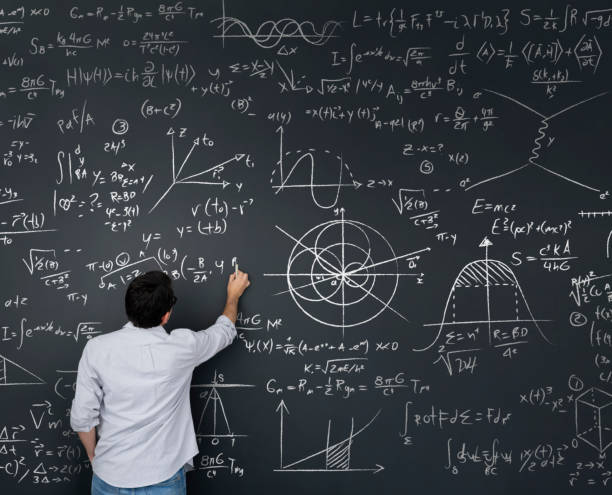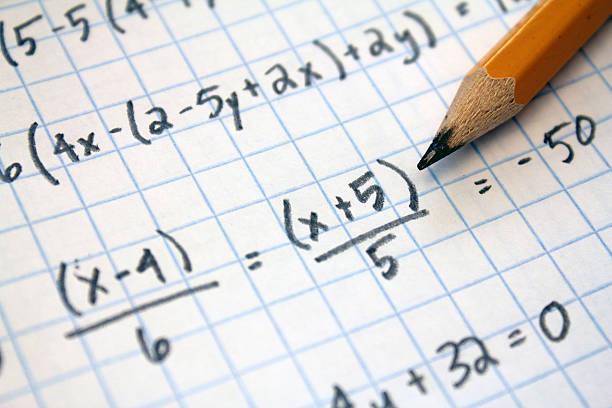Level 2 Algebra Courses for Children
Algebra 2 Scope and Sequence
Students will be able to:
- Graph the function f(x)=|x| and, when applicable, analyze the key attributes such as domain, range, intercepts, symmetries, asymptotic behavior, and maximum and minimum given an interval.
- Write the domain and range of a function in interval notation, inequalities, and set notation.
- Analyze the effect on the graph of f(x) = |x| when f(x) is replaced by af(x), f(bx), f(x - c), and f(x) + d for specific positive and negative real values of a, b, c, and d.
- Formulate absolute value linear equations.
- Solve absolute value linear equations.
- Solve absolute value linear inequalities.
Activities
- Domain and Range
- Intro to Absolute Value
- Absolute Value FunctionTranslations
- Abs Value Eqs and Ineqs First Step Stop Activity
Students will be able to:
- Graph the function f(x)=1/x and, when applicable, analyze the key attributes such as domain, range, intercepts, symmetries, asymptotic behavior, and maximum and minimum given an interval.
- Write the domain and range of a function in interval notation, inequalities, and set notation.
- Analyze the effect on the graph of f(x) = 1/x when f(x) is replaced by af(x), f(bx), f(x - c), and f(x) + d for specific positive and negative real values of a, b, c, and d.
- Formulate and solve equations involving inverse variation.
Activities
- Airport Impact
- Calculator Exploration (Rational F'n Graphs)
- Hardly Working
Students will be able to:
- Add, subtract, and multiply polynomials.
- Determine the quotient of a polynomial of degree three and of degree four when divided by a polynomial of degree one and of degree two.
- Determine the linear factors of a polynomial function of degree three and of degree four using algebraic methods.
- Determine linear and quadratic factors of a polynomial expression of degree three and of degree four, including factoring the sum and difference of two cubes and factoring by grouping.
- Add, subtract, and multiply complex numbers.
Activities
- Complex Numbers
- Factoring Polynomials Circuit Training
- Factoring Polynomials Puzzle
- Factoring Sum and Differences of Two Cubes
Students will be able to:
- Write the quadratic function given three specified points in the plane.
- Write the equation of a parabola using given attributes, including vertex, focus, directrix, axis of symmetry, and direction of opening.
- Given a table of data, formulate quadratic equations using technology.
- Transform a quadratic function f(x) = ax2 + bx + c to the form f(x) = a(x - h)2 + k to identify the different attributes of f(x).
- Solve quadratic equations.
- Solve quadratic inequalities.
Activities
- Extreme Punkin Chunkin
- General and VertexForm
- Problem Solving with Quadratics
- Applying Quadratics
- Solving Quadratic Inequalities
Students will be able to:
- Formulate systems of equations, including systems consisting of three linear equations in three variables and systems consisting of two equations, the first linear and the second quadratic.
- Solve systems of three linear equations in three variables by using Gaussian elimination, technology with matrices, and substitution.
- Solve, algebraically, systems of two equations in two variables consisting of a linear equation and a quadratic equation.
- Determine the reasonableness of solutions to systems of a linear equation and a quadratic equation in two variables.
Activities
- Instructions for Using Matrices to Solve Systems.pdf
- Candy Lab Solving Systems Using Matrices
- Quadratic and Linear System Task
Students will be able to:
- Formulate systems of at least two linear inequalities in two variables.
- Solve systems of two or more linear inequalities in two variables.
- Determine possible solutions in the solution set of systems of two or more linear inequalities in two variables.
Activities
- Border Patrol
- Graph Attack – Cow Zapping
- Systems of Inequalities Scavenger Hunt
Students will be able to:
- Rewrite radical expressions that contain variables to equivalent forms.
- Graph the function f(x)= √x and, when applicable, analyze the key attributes such as domain, range, intercepts, symmetries, asymptotic behavior, and maximum and minimum given an interval.
- Write the domain and range of a function in interval notation, inequalities, and set notation.
- Determine the effect on the graph of f(x) = √x when f(x) is replaced by af(x), f(x) + d, f(bx), and f(x – c) for specific positive and negative values of a, b, c, and d.
- Given a table of data, formulate square root equations using technology.
- Solve square root equations.
- Identify extraneous solutions of square root equations.
Activities
- A Screeching Halt
- Firefighter
- Radical Transformations
- The Square Root Function
Students will be able to:
- Write the domain and range of a function in interval notation, inequalities, and set notation.
- Graph the functions f(x)= bx, and f(x)=logb (x) where b is 2, 10, and e, and, when applicable, analyze the key attributes such as domain, range, intercepts, symmetries, asymptotic behavior, and maximum and minimum given an interval.
- Determine the effects on the key attributes on the graphs of f(x) = bx and f(x) = logb (x) where b is 2, 10, and e when f(x) is replaced by af(x), f(x) + d, and f(x - c) for specific positive and negative real values of a, c, and d.
- Solve equations involving rational exponents.
- Formulate exponential and logarithmic equations that model real-world situations, including exponential relationships written in recursive notation.
- Rewrite exponential equations as their corresponding logarithmic equations and logarithmic equations as their corresponding exponential equations.
- Solve exponential equations of the form y = abx where a is a nonzero real number and b is greater than zero and not equal to one and single logarithmic equations having real solutions.
- Determine the reasonableness of a solution to a logarithmic equation.
Activities
- Attach of the Buzz Bugs
- Where did the Buzz Bugs Go?
- Intro To Exponential Functions
- Radioactive Decay
- Definition of Logarithm with Applications
- Intro to Logs
- Log Equations Maze
- Graphs of Log Functions
Students will be able to:
- Graph and write the inverse of a function using notation such as f -1(x).
- Describe and analyze the relationship between a function and its inverse (quadratic and square root, logarithmic and exponential), including the restriction(s) on domain, which will restrict its range.
- Use the composition of two functions, including the necessary restrictions on the domain, to determine if the functions are inverses of each other.
Activities
- Inverse Functions PowerPoint
- Composing Functions Dice Game
- Intriguing Inverses
- Exponential Reflections
- Inverse Functions Identifying Pairs
Students will be able to:
- Write the domain and range of a function in interval notation, inequalities, and set notation.
- Graph the functions f(x)=x3 and f(x)= 3√x, and, when applicable, analyze the key attributes such as domain, range, intercepts, symmetries, asymptotic behavior, and maximum and minimum given an interval.
- Analyze the effect on the graphs of f(x) = x3 and f(x) = 3√x when f(x) is replaced by af(x), f(bx), f(x - c), and f(x) + d for specific positive and negative real values of a, b, c, and d.
- Solve cube root equations that have real roots.
Activities
- Roots of Radical Equations
- Cubic Functions Matching
Students will be able to:
- Determine the sum, difference, product, and quotient of rational expressions with integral exponents of degree one and of degree two.
- Determine the asymptotic restrictions on the domain of a rational function and represent domain and range using interval notation, inequalities, and set notation.
- Formulate rational equations that model real-world situations.
- Solve rational equations that have real solutions.
- Determine the reasonableness of a solution to a rational equation.
Activities
- Asymptotes and Zeros of Rational Functions
- Finding Vertical Asymptotes
- The Trick for Finding Horizontal Asymptotes
- Mirror Mirror on the Floor
- Rational Functions Four-Square Activity
- Simplifying Rational Expressions
Students will be able to:
- Analyze data to select the appropriate model from among linear, quadratic, and exponential models.
- Use regression methods available through technology to write a linear function, a quadratic function, and an exponential function from a given set of data.
- Predict and make decisions and critical judgments from a given set of data using linear, quadratic, and exponential models.
Activities
- And We Have Liftoff
- Bungee Bounce
- Chirp Jump and Scatter
- Quadratic Regression


